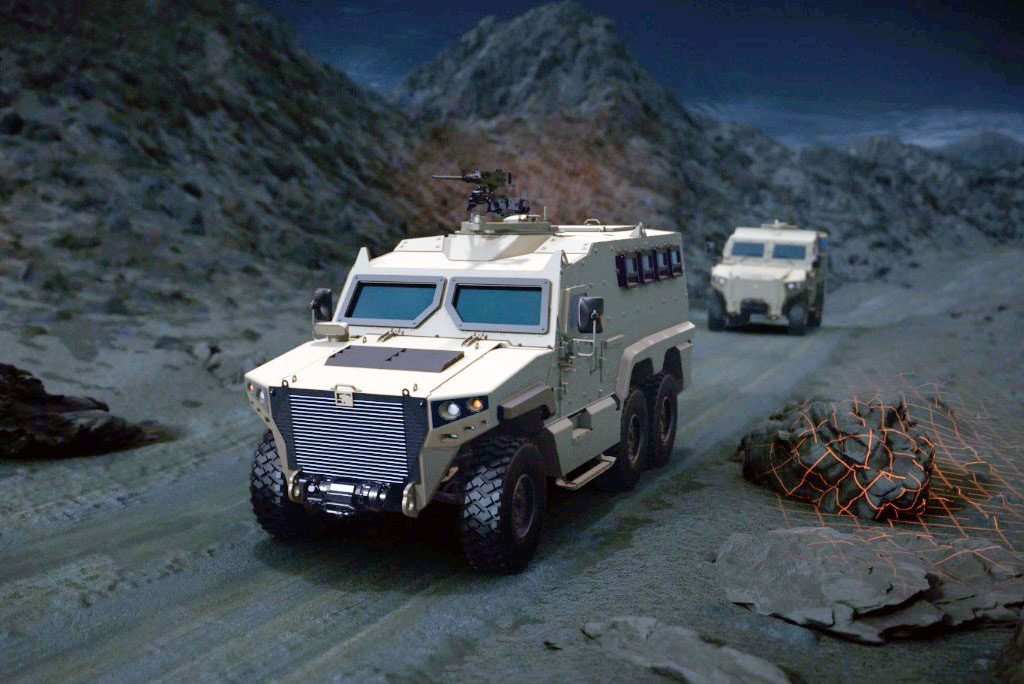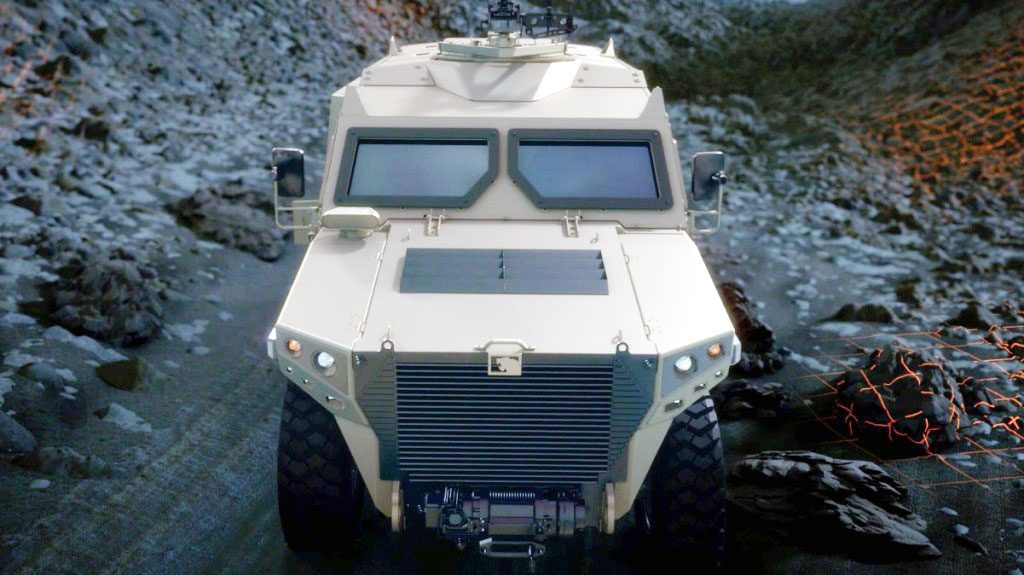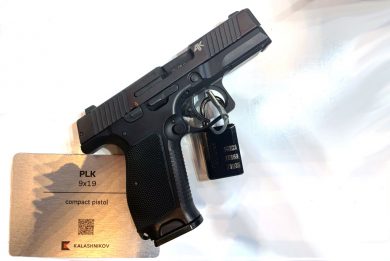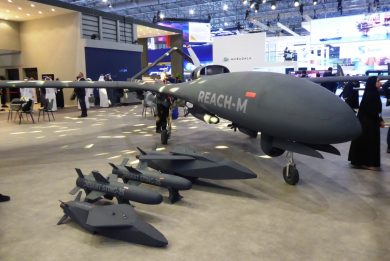
Nimr: second generation Hafeet Mk2 will be unveiled at IDEX
By Paolo Valpolini
At IDEX 2021 Nimr, the EDGE company specialised in armoured vehicles, will unveil the Mark 2 version not only of its Ajban 4×4 but also that of its Hafeet 6×6 platform, which is proposed as a multirole platform capable to be fitted for different roles, the basic version being the armoured personnel carrier.
The Generation 1 Hafeet was declined in one armoured version, the APC, and with two-man and four-man cabins for logistic or specialised missions roles. The Generation 2 is designed as a full length vehicle, which in the APC role maintains the two-man crew plus eight dismounts transport capacity, with an increased Gross Vehicle Weight, 16,500 versus 15,000 kg, but with a payload which is nearly the double, 3,000 versus 1,850 kg. To ensure sufficient power the 300 hp Cummins engine has been replaced by a new powerpack providing 360 hp (previously proposed as option), protected by the hull against ballistic threats, with an increase of over 20% of the power-to-weight ratio which is now close to 22 hp/t. Cruising range at 100 km/h is of 650 km. Coupled to a 6-speed automatic transmission, the whole powerpack is designed to ensure a quick replacement. The vehicle design maintains the architecture with the two rear axles separated by 1,240 mm, the space between the front and the second axle being 3,115 mm. The Hafeet Mark 2 can cross a 700 mm wide trench, ford a 1,000 mm deep water obstacle, while approach and departure angles are respectively 35° and 32°. Compared to the previous APC design the Gen 2 Hafeet is longer, 7,000 versus 6,450 mm, is 150 mm wider and 155 mm higher, increasing the inside protected volume.

While on the previous platform protection was provided as add-on, the Hafeet Mark 2 monocoque hull ensures Level 3 protection according to STANAG 4569 (7.62×51mm AP at 30 meters) against ballistic threats, and Level 3a/b against blast (8 kg TNT equivalent under wheel and under belly), the ground clearance having been slightly increased. The four side windows per side available in the rear troop compartment have a smaller surface than those in the original Hafeet, the same being true for the two-piece windscreen, which ensures anyway good view to the driver and commander. These access the vehicle via the two front doors, while a rear door is provided for the dismounts, who have at their disposal four foldable seats per side. Weapons to be installed on a pintle mount range from a 12.7 mm machine gun, to a 40 mm automatic grenade launcher, to 7.62 or 5.56 mm MGs,. It should however be possible to install a RCWS fitted with the same range of weapons, the excess of payload probably allowing also a further increase in protection.
Beside the APC version Nimr proposes an artillery observation vehicle, fitted with a rectractable mast 1.48 meters high when collapsed and 4 meters when extended, on which electro-optic and/or radar sensors can be fitted, the rear compartment hosting operators’ workstations with computers and a communication hub. A surveillance and observation vehicle is also proposes, with a crew of four, a mast-mounted suite as well as an auxiliary power unit, installed in the rear on each side of the door, the APU allowing long endurance operations with the engine off. As for the ambulance version, this can host up to two stretchers with medical equipment and two medical personnel, plus the crew of two.
This article will be updated with more information and photos during the exhibition
Images courtesy Nimr


